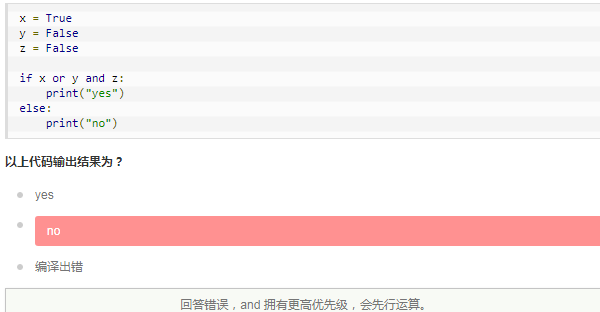s='hello alex alex say hello sb sb'
l=s.split()
dic={}
for item in l:
if item in dic:
dic[item]+=1
else:
dic[item]=1
print(dic)
运行结果:计算每个元素出现的次数
{'hello': 2, 'alex': 2, 'say': 1, 'sb': 2}
def fib(max):
n,a,b =0,0,1
while n < max:
yield b
a,b =b,a+b
n = n+1
return 'done'
for i in fib(6):
print(i)
运行结果:输出斐波那契数列
1
1
2
3
5
8
s = "ajldjlajfdljfddd" s = set(s) s = list(s) print(s) s.sort(reverse = False) print(s) #print(type(s.sort(reverse = False))) #报错 s.sort(reverse = True) print(s) res = "".join(s) print(res) 运行结果:去重并按序输出 ['j', 'd', 'f', 'a', 'l'] ['a', 'd', 'f', 'j', 'l'] ['l', 'j', 'f', 'd', 'a'] ljfda
#列表推导式求列表所有奇数并构造新列表 a = [1, 2, 3, 4, 5, 6, 7, 8, 9, 10] res = [i for i in a if i%2 == 1] print(res) 运行结果: [1, 3, 5, 7, 9]
#lambda的使用
g = lambda x,y=0,z=0: x+y+z print(g(1)) print(g(3,4,7)) 运行结果: 1 14
(g = lambda x,y=0,z=0: x+y+z)(1,2,3)
运行结果:
6
runoob测验-运算符



def Foo(x): if (x==1): return 1 else: return x+Foo(x-1) print(Foo(4)) 运行结果:10